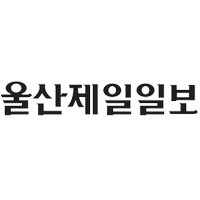Han Kyung-yeon, prospect of’oldest country’ among OECD in 2048
Proposal for strengthening private pension support and increasing demand for private jobs for the elderly
Korea’s aging rate is the fastest among OECD member countries, and it is predicted that it could become the oldest country in 2048. The Korea Economic Research Institute, affiliated with the National Federation of Entrepreneurs, announced on the 17th, as a result of analyzing the aging rate and poverty rate in 37 OECD countries.
According to Han Kyung-yeon, the number of elderly people aged 65 or older in Korea has increased by 4.4% per annum over the past 10 years.
This is 1.7 times the OECD average (2.6%), the fastest among OECD member countries.
Due to the rapid aging process, the ratio of the elderly population (15.7%), currently ranked 29th in the OECD, is expected to soar to 33.4% in 2041, 20 years later. It is said that one in three is an old man. In addition, it is highly likely that Korea will become the oldest among OECD countries, rising to 37.4% in 2048, Han Kyung-yeon predicted.
Despite the rapid aging rate, the level of poverty among the elderly in Korea is already the highest in OECD.
The poverty rate for the elderly in Korea was 43.4% in 2018, three times the OECD average (14.8%).
It was higher than the five major countries (G5), the United States (23.1%), Japan (19.6%), the United Kingdom (14.9%), Germany (10.2%), and France (4.1%).
Han Kyung-yeon compared and analyzed the countermeasures against aging between Korea and the G5, and suggested strengthening private pension support, flexible labor market, and expanding the demand for private jobs for the elderly as a countermeasure for aging and poverty for the elderly.
As of 2018, the replacement rate for public and private pensions in Korea was 43.4%, less than half of the average earnings before retirement. On the other hand, the G5 countries averaged 69.6%.
In the G5 countries, the rate of tax support compared to private pension payments was 29.0% on average in 2018. Of this, the US accounted for 41.0%.
In addition, the rate of enrollment in the private pension for the working-age population was an average of 54.3%, and it was found that more than one out of two people joined the private pension. On the other hand, in Korea, the private pension tax support rate and the private pension subscription rate were only 20.0% and 16.9%, respectively.
In addition, although G5 countries are trying to increase the starting age of pension benefits from 65 to 67 years old to 67 to 75 years old, Korea is now planning to raise the starting age from 62 to 65.
Han Gyeong-yeon pointed out that this market structure further raises the poverty rate for the elderly because the labor market is rigid due to the stiff labor market due to dispatch and fixed-term regulations and high layoff costs.
“The aging rate is unprecedented in the world, so it is urgent to prepare measures such as reinforcement of pension functions,” said Chu Kwang-ho, head of the economic policy department. “We have to provide quality jobs for them.”
Reporter Kim Ji-eun
Copyright holder © Ulsan Jeilbo Unauthorized reproduction and redistribution prohibited
